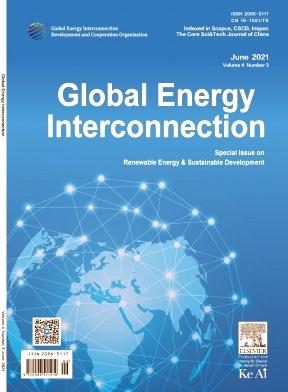基于融合迁移学习策略的混合深度学习模型的光伏短期电力预测
IF 2.6
Q4 ENERGY & FUELS
引用次数: 0
摘要
光伏发电的准确预测是混合电网调度的重要依据。随着光伏电站规模的扩大和分布式光伏的普及,本研究针对新建光伏基地数据不足和光伏发电预测精度低的问题,提出了一种基于迁移学习的多层光伏发电预测模型。该模型被称为DRAM,将扩展卷积神经网络(DCNN)模块与双向长短期记忆(BiLSTM)模块连接起来,并集成了注意机制。首先,将处理后的数据输入到DCNN层,膨胀卷积机制捕获输入数据宽感觉场的空间特征。随后,在BiLSTM层中提取特征之间的时间特征。最后,利用注意机制通过分配权重来增强关键特征,从而有效地构建特征与输出变量之间的关系。此外,通过将预训练好的模型参数传递到新PV站点预测模型中,提高了新PV站点的功率预测精度。在本研究中,分析了不同源域数据对模型的预训练,以及这些预训练模型与目标域的相关性。本文章由计算机程序翻译,如有差异,请以英文原文为准。
Short-term photovoltaic power forecasting based on a new hybrid deep learning model incorporating transfer learning strategy
The accurate prediction of photovoltaic (PV) power generation is an important basis for hybrid grid scheduling. With the expansion of the scale of PV power plants and the popularization of distributed PV, this study proposes a multilayer PV power generation prediction model based on transfer learning to solve the problems of the lack of data on new PV bases and the low accuracy of PV power generation prediction. The proposed model, called DRAM, concatenates a dilated convolutional neural network (DCNN) module with a bidirectional long short-term memory (BiLSTM) module, and integrates an attention mechanism. First, the processed data are input into the DCNN layer, and the dilation convolution mechanism captures the spatial features of the wide sensory field of the input data. Subsequently, the temporal characteristics between the features are extracted in the BiLSTM layer. Finally, an attention mechanism is used to strengthen the key features by assigning weights to efficiently construct the relationship between the features and output variables. In addition, the power prediction accuracy of the new PV sites was improved by transferring the pre-trained model parameters to the new PV site prediction model. In this study, the pre-training of models using data from different source domains and the correlations between these pre-trained models and the target domain were analyzed.
求助全文
通过发布文献求助,成功后即可免费获取论文全文。
去求助
来源期刊

Global Energy Interconnection
Engineering-Automotive Engineering
CiteScore
5.70
自引率
0.00%
发文量
985
审稿时长
15 weeks
 求助内容:
求助内容: 应助结果提醒方式:
应助结果提醒方式:


